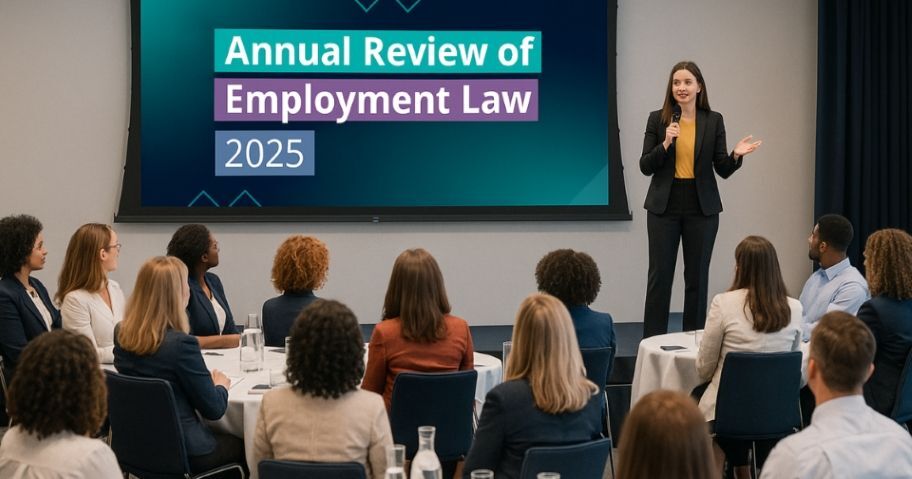
The Bar of Ireland
Orchard Way, Killarney V93Y9W9.
DX: 51010 Killarney
Tel: (087) 4361270
Patrick's legal education is robust, beginning with a BCL Law Degree from University College Cork (2012-2016), followed by an LL.M in Business Law from the same institution (2016-2017), and culminating in a Barrister-at-Law Degree from The Honorable Society of King’s Inns in Dublin (2019-2021). He has extensive experience on the South-West Circuit, handling Civil, Family, and Criminal Law cases, as well as advising the Citizen Advice Service. He has worked as an employment consultant, dealing with workplace investigations and bankruptcy procedures.
The WRC held that a six-week period of agency work broke the complainant’s continuity of service, meaning he was not entitled to a Contract of Indefinite Duration under the Fixed-Term Work Act.
The Complainant said he had served three successive fixed-term contracts as an ED Registrar at Midland Regional Hospital, doing the same duties throughout. After the third year, HR did not renew his contract and required him to sign a leaving form. He then worked the same post via an agency for six weeks and was subsequently rehired on another fixed-term contract. He stated he continued to receive rotas during the “gap” and was expected to cover the same shifts, which suggested the break was engineered to avoid granting a Contract of Indefinite Duration (CID) under s.9 of the 2003 Act. He maintained that, taken together, his fixed-term service and the agency month amounted to continuous employment. He also asserted that the hospital failed to give written objective grounds justifying renewal and the refusal of a CID, contrary to s.8(2). The Respondent accepted the Complainant held fixed-term contracts but emphasised a break in service when he worked as an agency employee. They argued agency workers were outside the 2003 Act, so the break defeated continuity. Even if continuity were assumed, they said the “gap” could not count toward the four-year aggregate, leaving the Complainant below 208 weeks. They added the contract was not a “renewal” but a new initial fixed-term following a fresh competition and interview, so s.8(2) did not apply; in any event, any s.8(2) complaint was out of time.
The Adjudicating Officer found the sequence of contracts comprised three fixed-term contracts, a period of agency work, and a further fixed-term. Applying s.9 of the 2003 Act, the Adjudicator held the six weeks period broke continuity because the Complainant was employed by an agency, not the hospital. Consequently, at termination he did not have the requisite continuous service for a CID. Alternatively, even treating service as continuous, the aggregate of the fixed-term contracts did not reach four years (208 weeks) once the agency interval was excluded. On the s.8(2) claim, the Adjudicator held the engagement followed a new application and interview and was not a “renewal”; regardless, any s.8(2) complaint had to be made within six months of renewal and was lodged roughly 16 months later. Both complaints were therefore not well-founded; the s.8(2) complaint was also out of time.
Employers should note continuity and aggregate duration under s.9, and on timely written reasons under s.8. To minimise CID risk and litigation, employers should:
- Maintain a single service log showing start/end dates, employers of record, and any breaks. Flag where agency engagements interrupt continuity for the 2003 Act.
- Where fixed terms end, issue clear non-renewal letters in advance, confirming the termination date, that the contract will not be renewed, and the route to apply for future posts.
- If rehiring after a gap, conduct a documented selection process (advertisement, shortlisting, interview) so the next contract is demonstrably a new engagement rather than a renewal.
- When you propose to renew, provide a contemporaneous s.8(2) statement with objective grounds and why no CID arises. Where it is not a renewal, ensure the initial contract satisfies s.8(1).
- Avoid communications (e.g., rotas sent during gaps) that could suggest sham continuity. If service is genuinely via an agency, liaise through the agency and cease direct rostering.
- State training/service-need rationale for fixed terms, mobility/rotation expectations, and make explicit that posts are time-bound.
Track the six-month WRC window (and potential 12-month extension) following any renewal, ensuring your file has the s.8(2) letter and proof of delivery.
The full case can be found here.
Continue reading
We help hundreds of people like you understand how the latest changes in employment law impact your business.
Please log in to view the full article.
What you'll get:
- Help understand the ramifications of each important case from NI, GB and Europe
- Ensure your organisation's policies and procedures are fully compliant with NI law
- 24/7 access to all the content in the Legal Island Vault for research case law and HR issues
- Receive free preliminary advice on workplace issues from the employment team
Already a subscriber? Log in now or start a free trial
 FREE WEBINAR: When Life Happens - Making Sense of Family Leave in the Irish Workplace
FREE WEBINAR: When Life Happens - Making Sense of Family Leave in the Irish Workplace
